45 biotic and abiotic factors in an ecosystem worksheet
Picture of ecosystem with biotic and abiotic factors the increase in rocks on the ground. the decrease in plant population. Question 13. 30 seconds. Q. What is the difference between biotic and abiotic. answer choices.biotic is non-living, abiotic is living.biotic is living, abiotic is living.. Abiotic factors have profound impacts on the variety and abundance of life in an ecosystem, whether in water or on land. Biology with Lab – Easy Peasy All-in-One High School Credits: 1. Prerequisite: Middle school biology and chemistry. Recommended: 9th or 10th Test Prep: CLEP Biology This course covers the basic material for this exam, but this is considered a very hard test, and I would suspect more will need to be studied to learn everything required for this huge exam. It’s worth the same as two college courses, which is why it covers so much.
Species definition a level biology aqa - rqvxpd.afb-bopp.de Book Ref Key Term Definition. 1.1 Ecosystem Self-contained unit made up of the biotic and abiotic factors in an area 1.1 Population A group of individuals of the same species in a habitat 1.1 Community The organisms of all species that live in the same area 1.1 Habitat The place where an organism normally lives.
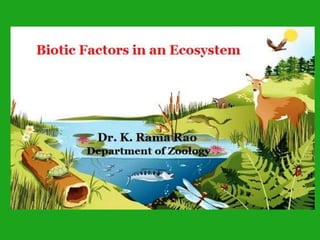
Biotic and abiotic factors in an ecosystem worksheet
Protecting Biodiversity in the Amazon Rainforest A terrestrial ecosystem is a land-based community of organisms and the interactions of biotic and abiotic components in a given area. Examples of terrestrial ecosystems include the tundra, taigas, temperate deciduous forests, tropical rainforests, grasslands, and deserts. The type of terrestrial ecosystem found in a particular place is dependent on the temperature range, the … Ecological Succession Worksheet - Pearland High School Ecosystems constantly change. A tree falling in a forest affects the forest ecosystem. A fire might alter the forest habitat so much that some species cannot survive and others can thrive. The process of one community replacing another as a result of changing abiotic and biotic factors is called ecological succession. Biology Notes Form 3 PDF | Biology Form 3 Questions and … The topographical factors considered include altitudes, gradient (slope), depressions and hills. All these characteristics affect the distribution of organisms in an area e.g., the leeward and windward sides of a hill. Biotic factors: These are the living components in an ecosystem, competition predation, symbiosis, parasitism, human activities.
Biotic and abiotic factors in an ecosystem worksheet. Cell Structure - Biology Online Tutorial A typical eukaryotic cell is comprised of cytoplasm with different organelles, such as nucleus, endoplasmic reticulum, Golgi apparatus, mitochondria, and so on. The cellular contents are surrounded by a double layer, cell membrane. These cellular structures and cell junctions are elaborated in this tutorial. Local and Global Effects of Deforestation in the Amazon Rain … A terrestrial ecosystem is a land-based community of organisms and the interactions of biotic and abiotic components in a given area. Examples of terrestrial ecosystems include the tundra, taigas, temperate deciduous forests, tropical rainforests, grasslands, and deserts. The type of terrestrial ecosystem found in a particular place is ... Biology Notes Form 3 PDF | Biology Form 3 Questions and … The topographical factors considered include altitudes, gradient (slope), depressions and hills. All these characteristics affect the distribution of organisms in an area e.g., the leeward and windward sides of a hill. Biotic factors: These are the living components in an ecosystem, competition predation, symbiosis, parasitism, human activities. Ecological Succession Worksheet - Pearland High School Ecosystems constantly change. A tree falling in a forest affects the forest ecosystem. A fire might alter the forest habitat so much that some species cannot survive and others can thrive. The process of one community replacing another as a result of changing abiotic and biotic factors is called ecological succession.
Protecting Biodiversity in the Amazon Rainforest A terrestrial ecosystem is a land-based community of organisms and the interactions of biotic and abiotic components in a given area. Examples of terrestrial ecosystems include the tundra, taigas, temperate deciduous forests, tropical rainforests, grasslands, and deserts. The type of terrestrial ecosystem found in a particular place is dependent on the temperature range, the …
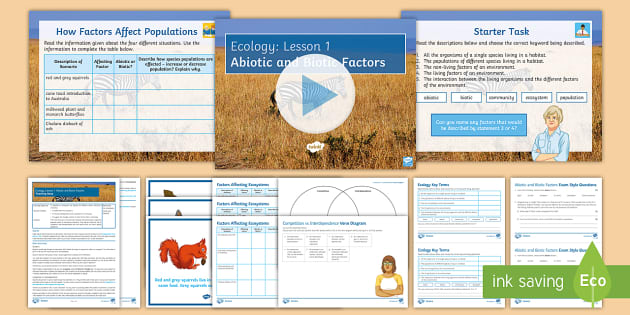


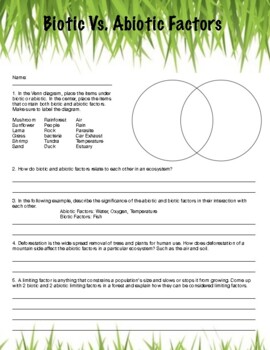

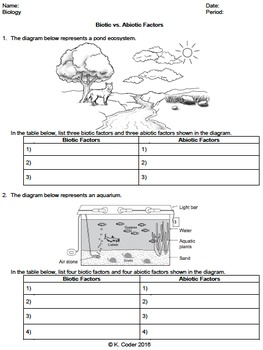







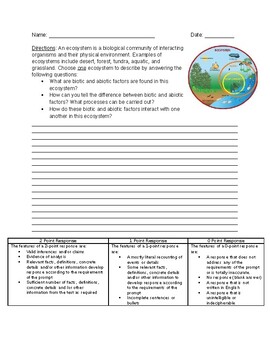
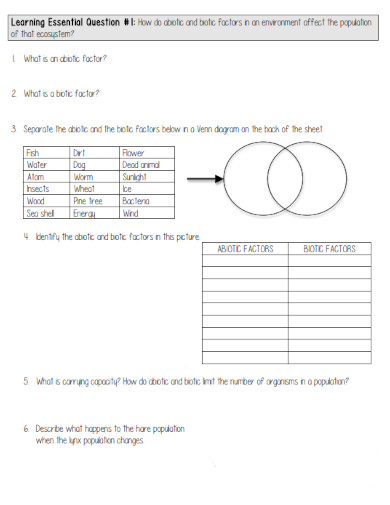









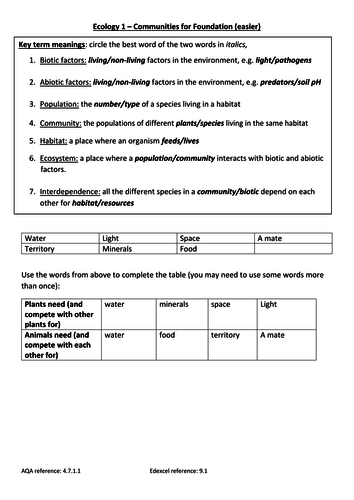




0 Response to "45 biotic and abiotic factors in an ecosystem worksheet"
Post a Comment